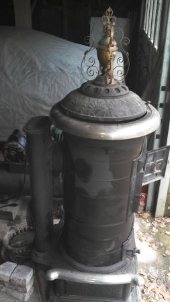High quality, efficient wood stoves are engineered as a sum of their parts. These materials work together creating a safe and efficient combustion system.
I find that the fire bricks keep the combustion chamber much hotter, so it's easier to add fresh wood to the coals and have it roaring hot and burning clean in no time. The fire bricks aren't insulation like kiln bricks, they are thermal mass that holds heat.
I have also used welded back-yard stoves. The plate steel cools off so quickly that I end up making fire from scratch half the time, and there is lots of smoke. This is not a good way to heat a house.
Removing the bricks from a stove designed for fire bricks is not wise. The firebox could warp, the safe clearances will change, and the combustion efficiency will likely be affected.
On the other hand, adding fire bricks to an efficient stove not designed for them is not a good idea either. It may cause damage. (This probably doesn't matter on a home-made stove.)
Is this the stove you have? I don't see any reference to fire bricks in the manual or expanded parts drawing.
https://www.jotul.com/products/wood-stoves/f-3-cb
 2
2




 8
8




 3
3




 6
6




 4
4




 3
3








 1
1









